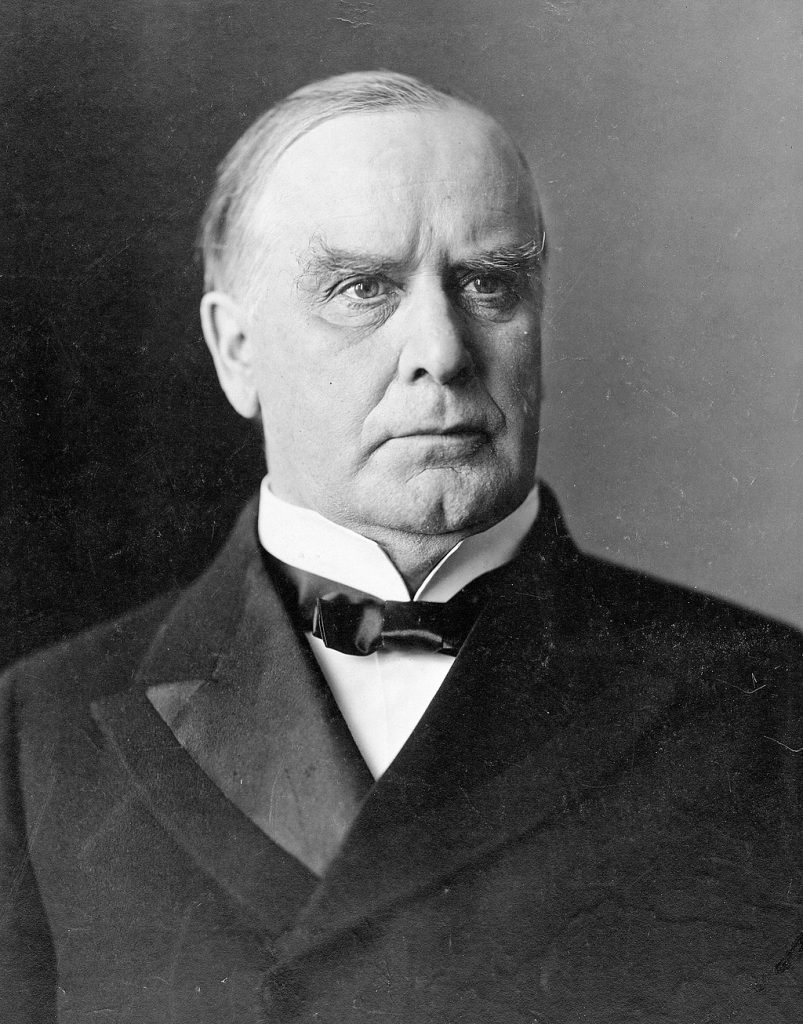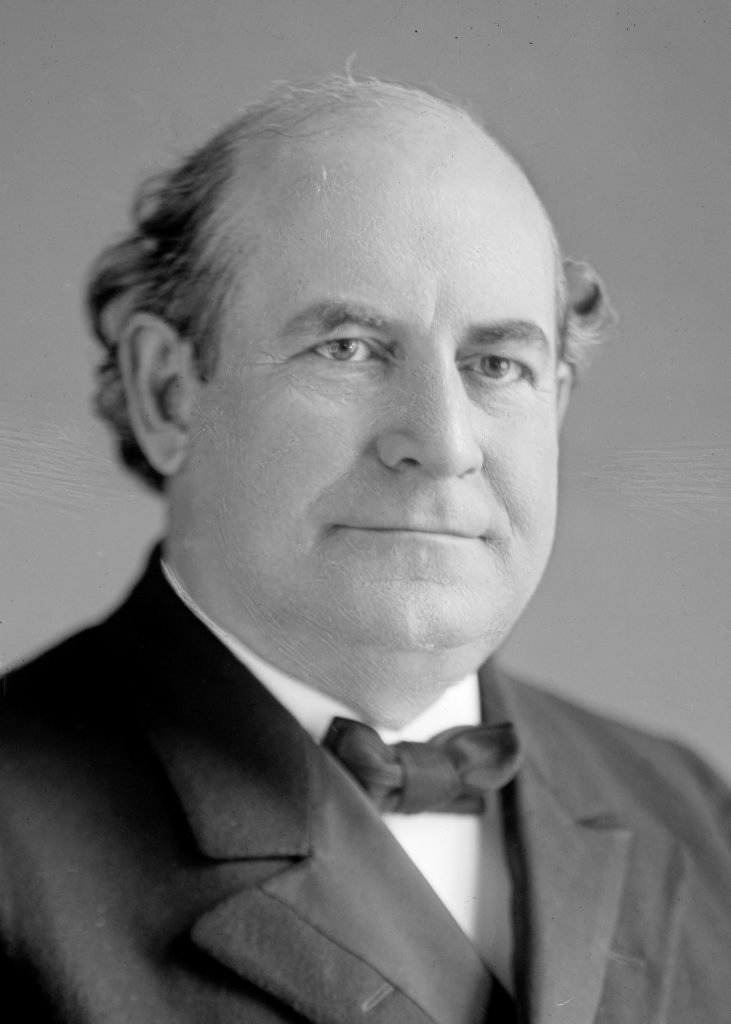Set against a backdrop of economic depression, the 1896 campaign focused on the resolution of a national debate concerning the metallic standard for U.S. currency.

presidential nominee William McKinley, from Ohio, advocated the preservation of the existing gold standard, while the Democratic platform demanded free and unlimited coinage of both silver and gold. Following the nomination of free silver candidate William Jennings Bryan, Democrats who favored maintenance of the gold standard bolted the party, forming the National Democratic Party under the leadership of former Indianapolis Congressman William Dallas Bynum.
The free silver debate overshadowed all other issues on the Indianapolis political scene. Nearly 3,000 Democrats assembled at on July 18 to ratify Bryan’s nomination. Ten days later the Indiana Peoples party (Populists) met in Indianapolis to endorse the national Populists’ nomination of Bryan, initiating a troubled and incomplete alliance with the .

In September the met in Indianapolis, nominating Senator John M. Palmer for president and former Confederate general Simon Bolivar Buckner for vice president. While Republicans continued to concentrate on an anti-silver pamphlet campaign, Bryan engaged in a 600-stop speaking tour, crossing Indiana five times and making a speech in Indianapolis on October 6 reminiscent of his famous “Cross of Gold” address.
Interest in the free silver issue sparked a heavy turnout at the polls in November and McKinley carried Indianapolis by a margin of 22,405 votes to Bryan’s 15,802. Having captured 12 of the 15 wards and four out of the nine townships, McKinley led a Republican sweep of both the city and the county. This marked the beginning of a decade-long period of Republican hegemony in state politics and effectively ended Indiana’s role as an evenly balanced and thus decisive state in presidential elections.

Help improve this entry
Contribute information, offer corrections, suggest images.
You can also recommend new entries related to this topic.

